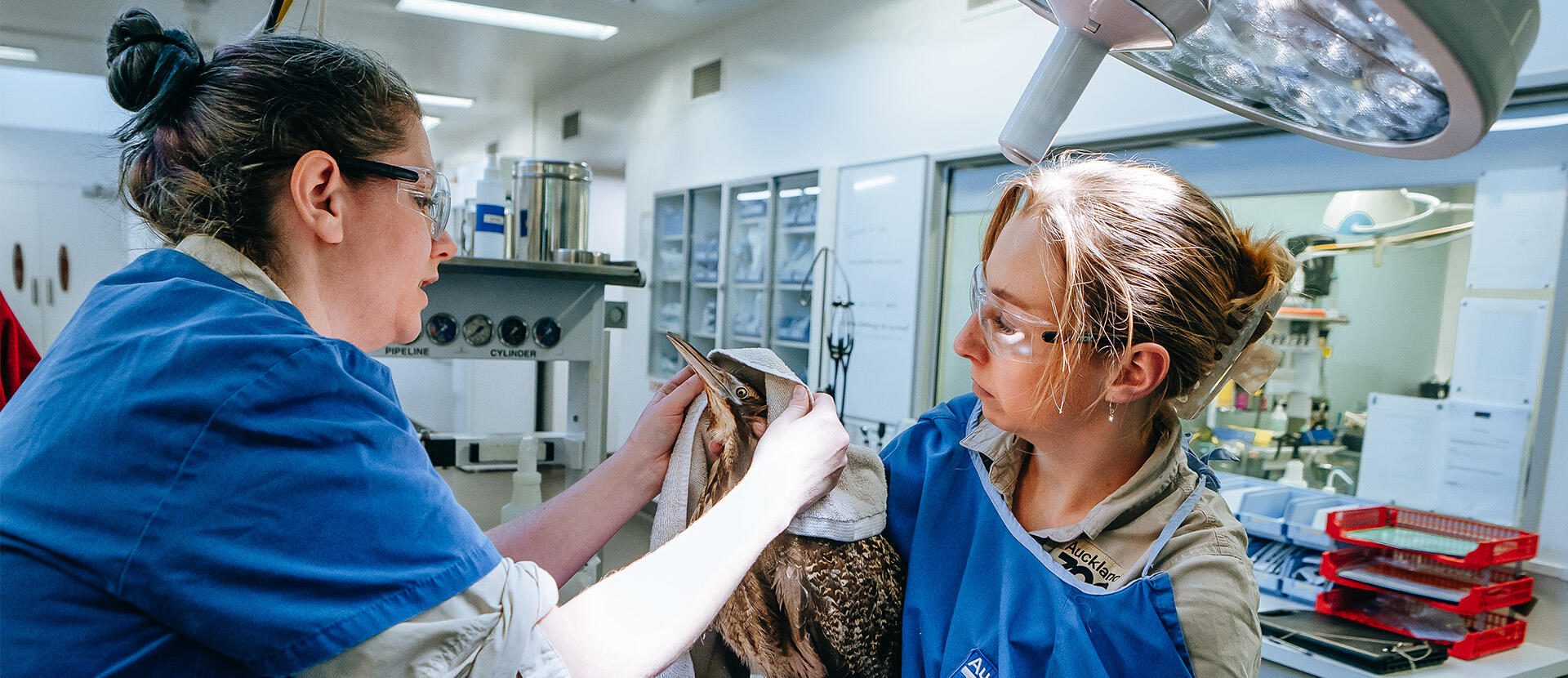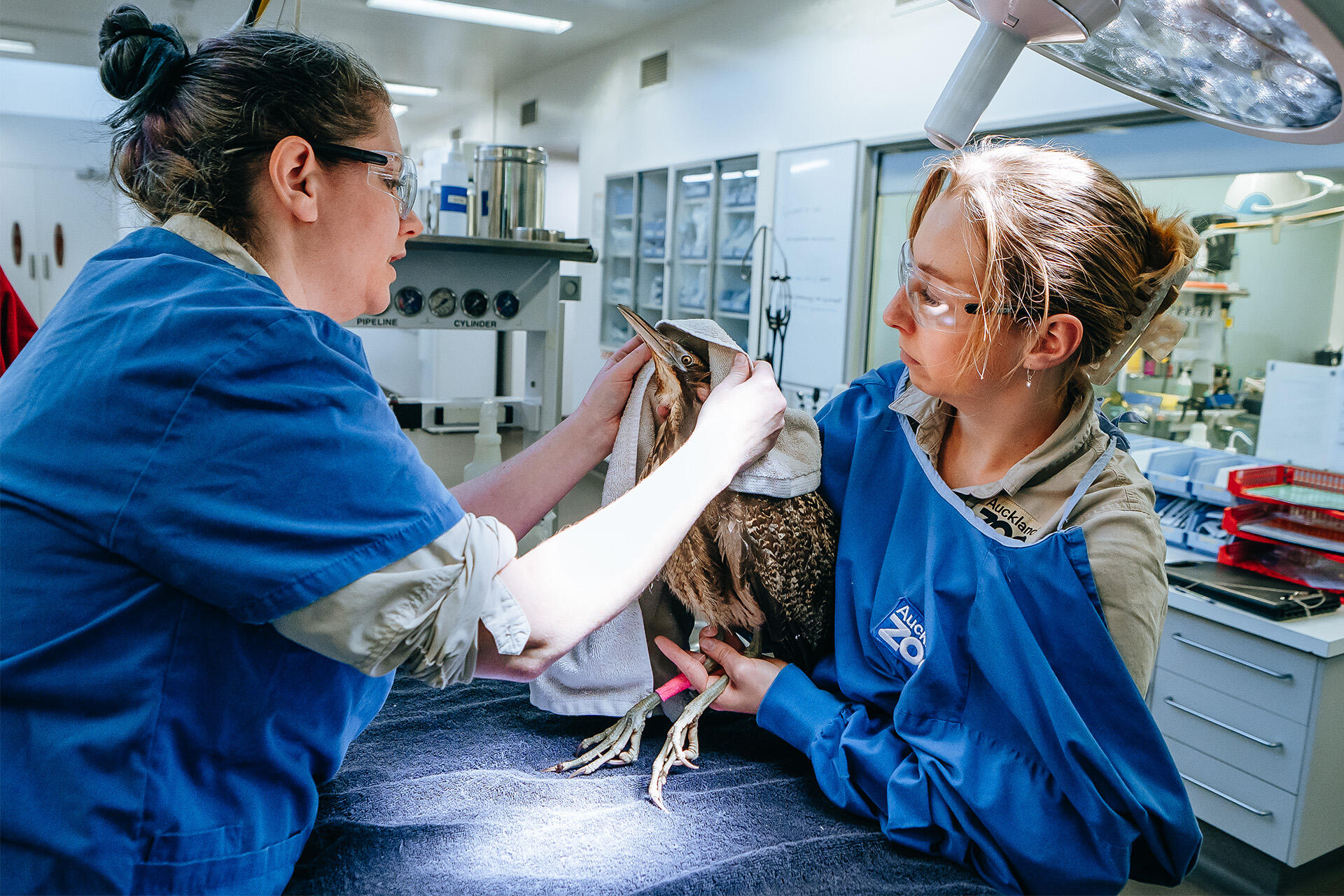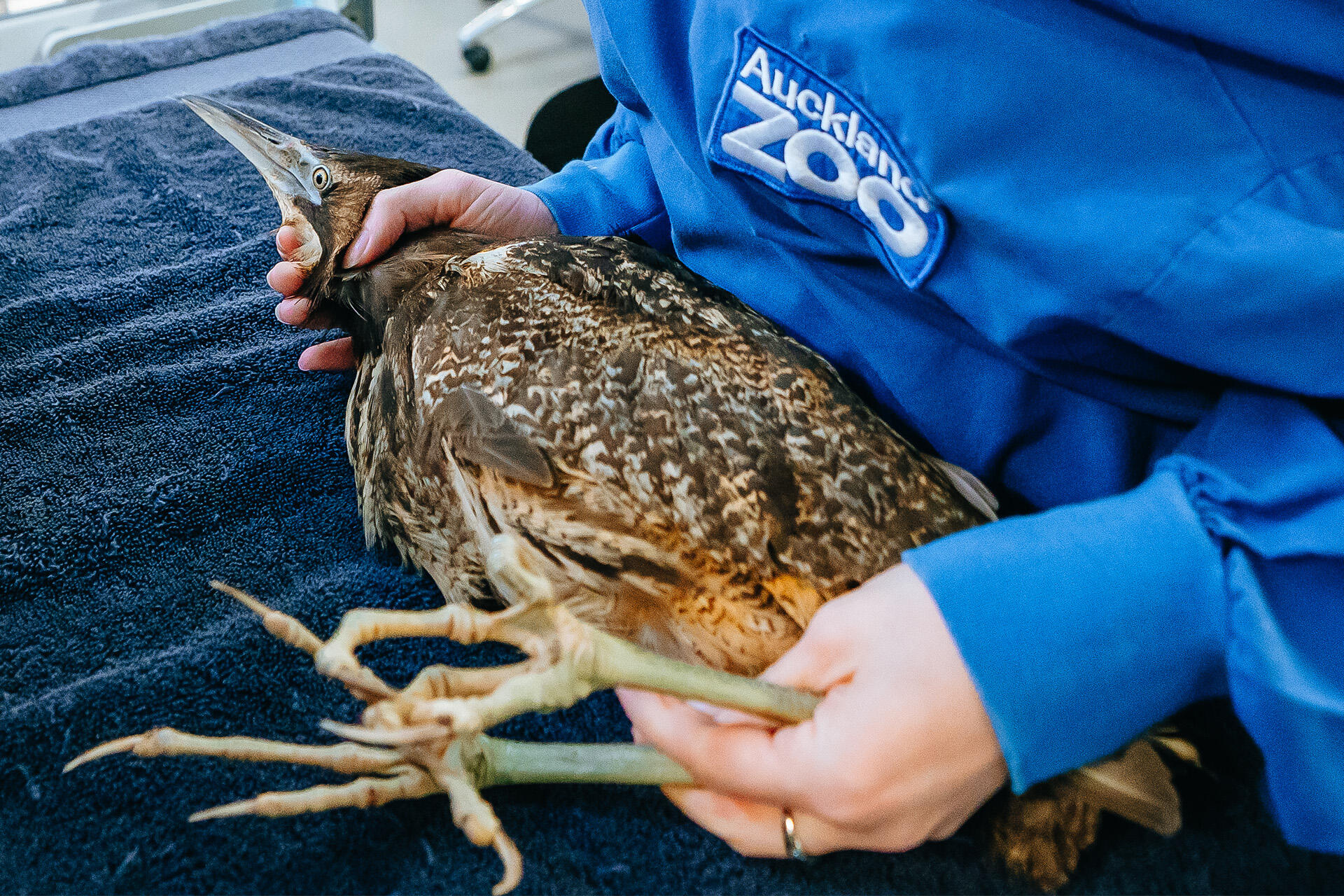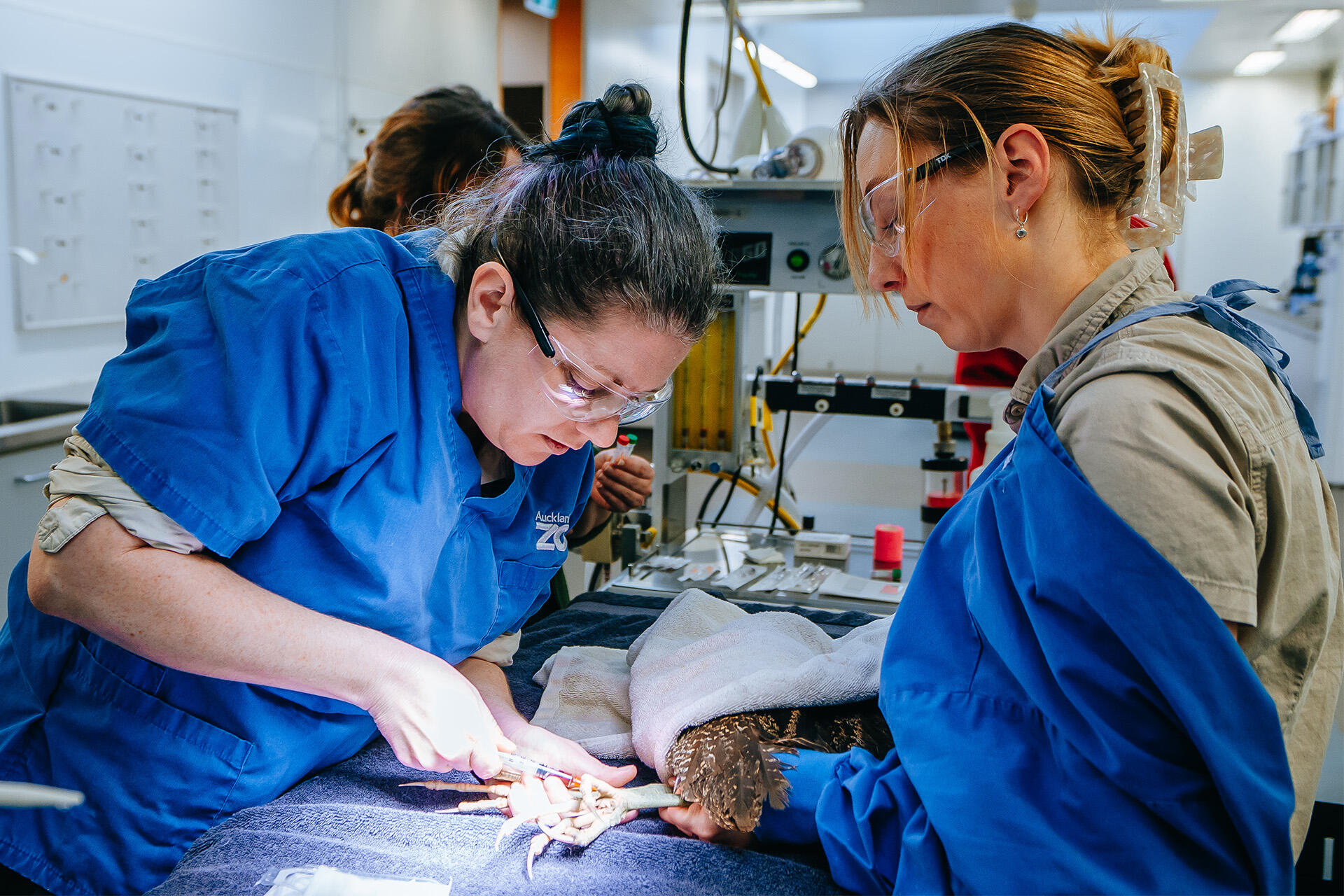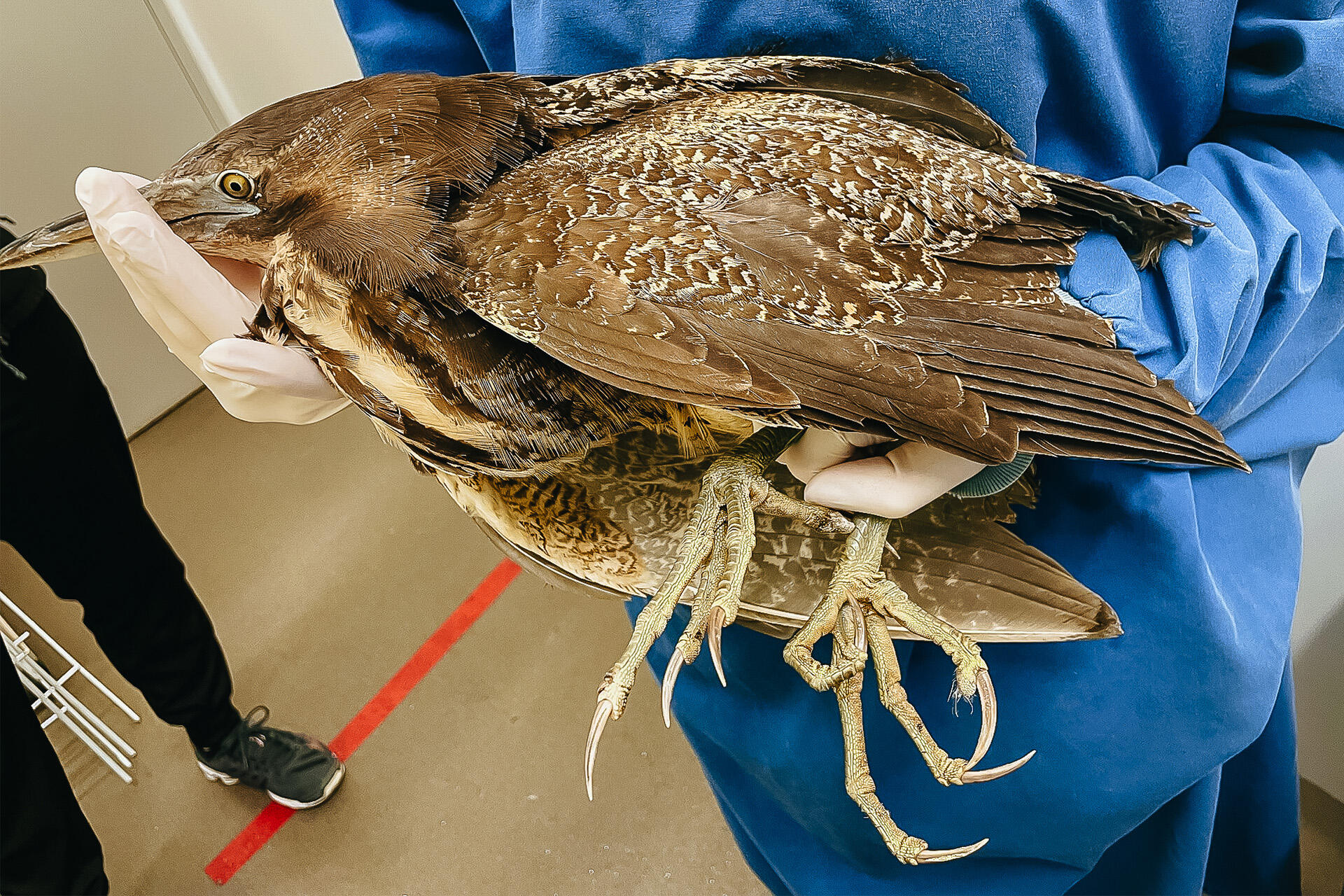Three weeks on, with intensive supportive and preventative veterinary care from our highly skilled team, she is bright and alert, self-feeding and eating well, and now boasts a weight of 912-gram – almost a kilogram! Supporting her excellent 300-gram weight gain has been the highly nutritious and varied diet she’s been enjoying, which has included salmon, mealworms, galleria, and crickets. She has also graduated to living in one of our hospital’s large undercover grassed yards, incorporating water pools.
Throughout her stay, our browse team has been playing an important role - providing plenty of fresh plant material for her to retreat and hide in – a natural behaviour of this sensitive species.
“Matuku-hūrepo are typically cryptic and secretive and when they become seriously ill like this, are understandably, prone to becoming stressed when in human care, which can also make them susceptible to serious infections such as aspergillosis. Along with care and treatments given, providing her with a calm, quiet, private environment has played an important part in her speedy recovery, and she has coped amazingly well,” says the Zoo’s senior veterinarian, Dr An Pas.
“It’s great to see her so strong and active now and at a weight that we and our Department of Conservation (DOC) colleagues regard as robust enough for release. Pending final blood tests that need to confirm she has a clean bill of health in all other respects, we are optimistic that she should be able to be released into a safe wetlands’ habitat very soon. As a female, this matuku-hūrepo is incredibly valuable to her species with the potential to breed, which would be the ultimate outcome.”


